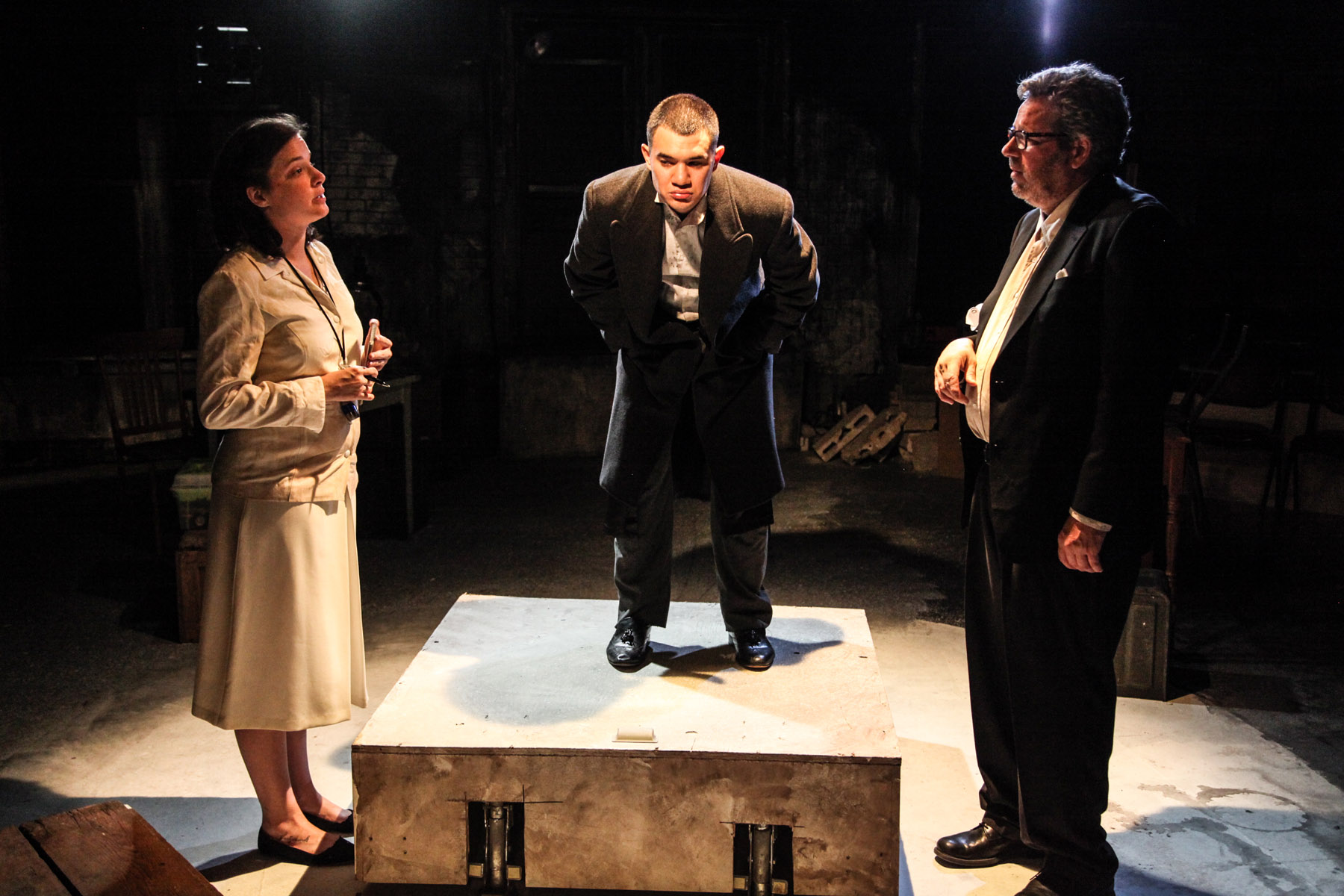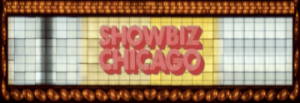Mary Arrchie’s Hellish Half-Light: Questions of Organic Waste.

- (left to right) Molly Fisher, Rudy Galvan and Stephen Walker in Mary-Arrchie Theatre Co.’s production of HELLISH HALF-LIGHT: Shorter Plays of Samuel Beckett directed by Jennifer Markowitz. Photo by Emily Schwartz.
Highly Recommended: Theatre In Chicago Review Round Up
Reviewed by: Dave McGuire
Darkness, and silence can be an expression of poetry, or misery. Is that the point of the series of Short Plays by Samuel Beckett, currently on display at the Mary Arrchie Theater? “Why don’t you let yourself die?” asks the old cripple, played by Stephen Walker in the first of the series. The show is an assemble cast each actor takes on multiple roles throughout, one after another Walker nocked his out of the park, but each and every member of the cast should be praised. This line, “why don’t you just let yourself die” the tone of the evening. Why don’t we, why don’t we let the world subsume us? Why don’t we curl up into a ball and die? Is it a Question of Organic waste? Darkness?
Seemingly the star of the show is the lighting – I kid you not, though rare to hear in the earliest portion of a review the Lighting designer Tyler Garlock, deserves mountains of praise. Hellish Half-light is the title of the show and he delivers that, – exactly, the play with darkness, and shadow throughout is chilling. As a lighting designer one plays with light, to reverse that and instead play with darkness is a prefund choice that, can be risky. Tyler, took the challenge and ran with it. Bold shadows splash the stage leaving the ensemble in a half lite limbo surrounded by blackness. The lighting, or lack there is the master stroke that makes Hellish Half-light more than other plays you could see, makes it more than a work of the assemble, it is indeed what takes us out of the mundane and slowly descends us piece by piece into a surrealistic hell.
If you are a fan of Salvador Dali, HR Geiger, if surrealism is your cup of tea, then you need to see this show. Arrive late and take the seating on stage, the actors move around you completely immersing you in the show. Each piece the ensemble brings to you six in all is once step on a twisting staircase lower into the abyss that is the human condition.
The first “Rough for theater 1” starts you out above the board in the real world, two homeless disabled men discussing the Merits of the soul, heavy themes yes, but why not what else are a blind and a crippled homeless man to discuss. The second, “Come and Go” seems normal at first if a little over theatrical, three women sit on a bench, but as the silence stretches out, there is a weird tickling at the of your neck a weird voice whispering to you, we’ve left reality behind. It’s that same sensation you get staring at a mirror, knowing you have already called for Bloody Mary twice as a kid. Normalcy? Yes, but only to a degree.
Now comes the Astral plane, This is where the true fun begins, the third piece is where all reality is shattered and you know you have slipped through the mirror, entered the world of the truly talented where all is a dream, but not, so vividly real. Throughout the third piece you are watching a pair of lawyers argue back and for the merits of a single act, suicide, should the client whom they represent indeed jump. I have to tell you this was the tipping point between reality and surrealism to me, and perhaps my favorite of the evening.
Adam Soul, who plays the sneering corporate lawyer arguing for death, was Amazing in his sincere distaste for all things remotely positive about the Man, While Steven Walker as the positive aspect, brings it home that there just has to be a reason for the man to live, and catches some of the best humor of the evening in a teacup, allowing the audience to sip on the laughter. I’ve got to say at this point, again we come back to the lighting, the entire scene is set off by the Man, Rudy Galvin, caught in a single beam of moonlight, which frames the setting so perfectly, and keeps your eye moving back to the motionless man of no interest who is the focal point of the piece while doing nothing. The Electric buzz constant throughout is that of a fly killing lamp set out by campers and the Blue of the light matches it perfectly. Now we have come down the latter far enough to start realizing we are descending into madness. Now we realize reality is melting like a clock in a Dali painting. We have slipped, free from our mundane and are approaching something, but what. We continue down.
By the fifth piece “What where,” we have entered a nightmarish dreamscape. Poetic torcher in all its bliss, the poetic lyrical nature of “What Where” will sooth you even as the entire world dies around you. Lauren Gugliemello’s voice bounces off the walls at both sad and defiant of the zombie like world of death “What Where” has become. Then the last rung, all reality is gone as we watch the pit of hell, a love triangle forever entombed, a concrete block, forever repeating and repeating their tale of woe, lost to reality, and while touching unable to connect, disassociated and, lost. All reality is gone. And it is a beautiful thing.
I cannot recommend this for children, nor those grownups looking for a fun filled evening, but, if you want a night of thought provoking dissidence, if you would like to see a master piece of the craft? Then come to Mary Archie and witness Hellish Half –Lite, a Master stroke of impressionistic living art.
HELLISH HALF-LIGHT plays through Aug. 30, 2014 at Mary-Arrchie Theatre Co, at Angel Island, 731 W. Sheridan Rd., Chicago Tickets: $25. $20 student/senior discount. Tickets go on sale Tuesday, July 1, 2014 at www.ticketweb.com or by calling the box office at (773) 871-0442. For calendar information visit theatreinchicago.com

